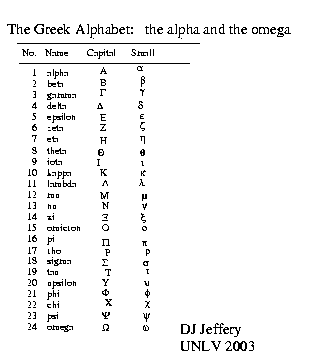 The Greek Alphabet: alpha, beta, gamma, delta, ...
The Greek Alphabet: alpha, beta, gamma, delta, ...
 An early sketch by Parmenides of Elea (early 5th century BC) of his
round Earth model.
An early sketch by Parmenides of Elea (early 5th century BC) of his
round Earth model.
 A schematic sketch of the solar system model
of Philolaus of Croton or Tarentum
(both in southern Italy) (late 5th century BC).
Aristotle calls this the model fo the Pythagoreans.
See Fu-57.
A schematic sketch of the solar system model
of Philolaus of Croton or Tarentum
(both in southern Italy) (late 5th century BC).
Aristotle calls this the model fo the Pythagoreans.
See Fu-57.
 Hellas: the Ancient Greek World circa 550 BC.
Hellas: the Ancient Greek World circa 550 BC.
Credit: Willliam R. Shepherd, 1926 Historical Atlas (now public domain). Download site Perry-Casta~neda Library Map Collection. An excellent site for public domain maps.
 Hellas: circa 431 BC at the outbreak of the Peloponnesian War.
Hellas: circa 431 BC at the outbreak of the Peloponnesian War.
My naive opinion is that the Peloponnesian War was the singular catastrophe for the ancient Greco-Roman world. The political path was lost to a democratic Hellenic commonwealth with Athens at the head and with co-citizenship for all citizens of all member states. Of course, Athens with its imperialism wasn't following that path, but maybe enlightenment was not so far off. But it was not found. In the 4th century there may have been another chance for Hellas and the rights of humankind. But as it was the ancient world went down the path of Hellenistic kings, Roman emperors, and religious obscurantism. A path of political and intellectual stultification.
For me the two most significant ancients were alive in 431 BC: Euripides, the Athenian playwright, and Democritus, the atomist philosopher of Abdera. They are free spirits of compassion and science whose illumination was never matched again until the Renaissance.
Credit: Willliam R. Shepherd, 1926 Historical Atlas (now public domain). Download site Perry-Casta~neda Library Map Collection. An excellent site for public domain maps.
- Presocratic Philosphers in Greek
- The Ancient Greek World
- Greeks with Spears
- Thales of Miletos The first philosopher
- Heraklitos of Ephesos ``You do not stride the same river twice: it flows''


